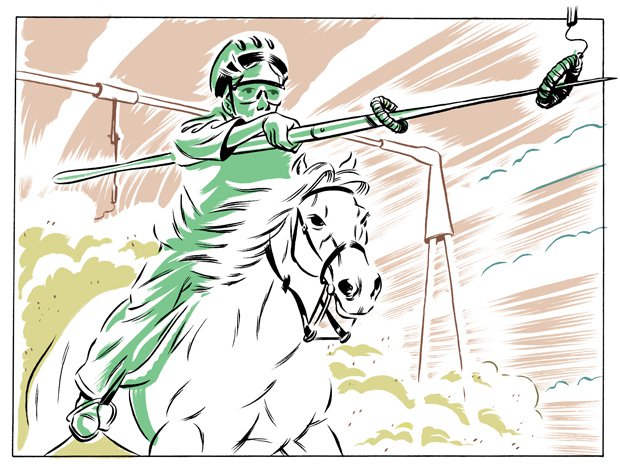The Appomattox County Library endures.

Illustration by Gary Hovland
1967: “Supervisors lower taxes on livestock” proclaimed the front page of the Appomattox Times-Virginian. Photos just below the headline depicted a librarian serving patrons and two preschoolers browsing the children’s shelves. Other than this unfortunate placement, though, the sterling reputation of the Appomattox County Library—then gearing up for its 27th birthday and National Library Week—was unaffected. A half-century later, the story describes a library life that’s been much transformed—and yet, hasn’t, really.
In ’67, the library housed 40,000 tomes, librarian Violet Harwood proudly told the paper. But it had so much more (here, some readers are advised to have Wikipedia handy): 283 vinyl phonograph records, 61 sound motion pictures (the first commercial “talkie,” The Jazz Singer, had appeared just 40 years earlier), and 758 film strips. The 10- to 20-minute film strip reels were usually of still pictures (a Cenozoic-era Powerpoint), and on specific topics, including What Is an Insect? and—apropos for the town where the gluing-back together of our nation began—Causes of the Civil War.
The institution was founded in 1940, when the Honorable David Bruce, of Charlotte Court House, “presented the library and $7,000 worth of books” to the people of Appomattox. The library thrives still, though in a new building and with a new name: the J. Robert Jamerson Memorial Library, honoring the brother of its builder and their family, its largest benefactor. So what else is new?
A lot, says Katharine Bloodworth, a communications services specialist who has been with the library since 1996. Phonograph records? Not hardly, since the library no longer carries even music CDs—thanks to iPods, YouTube and streaming. Sound motion pictures? After the videocassette phase, that clutter was cleared and replaced with DVDs and Blu-Rays, she says. (And these, too, are on shaky ground in the wake of streaming.)
For Bloodworth, the saddest and the best developments are strangely the same: new technologies. “We no longer have card catalogs or encyclopedias,” she says, citing cost and space restrictions. Like many, she feels something has been lost by the disappearance of “hands-on research.” Yet she acknowledges the flip side of that coin. “Country borders, presidents change every day,” she says. “For the latest information, we go right to the Internet.” Multimedia tools also let the library reach out to the community. “Our motto is ‘More than Just Books.’ Even though we’re a small library, we are trying to keep up with technology,” she explains. “We have a Facebook page and a Twitter account, more than a dozen computers that are all Internet connected, as well as high-speed Wi-Fi and a wireless printer.” Office services are available, including faxing and laminating. Plus, it lends DVDs, magazines—and books!
Though the employees from 1967 long ago moved on, one stalwart remains: Herman. “Herman is a philodendron from the ’60s,” explains Bloodworth. Herman’s workspace is on the young-adult fiction shelf. And don’t fret about the availability of fewer volumes. Like many other libraries, the library lends eBooks online. In other words, the stock is live.
National Library Week takes place April 9–15. For more information, go to ALA.org










